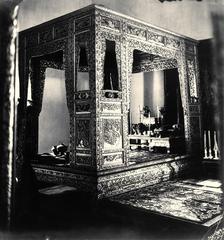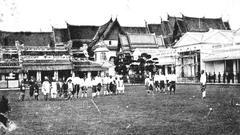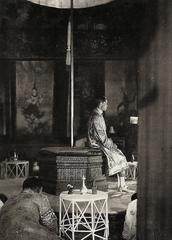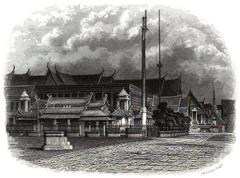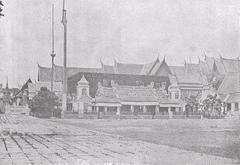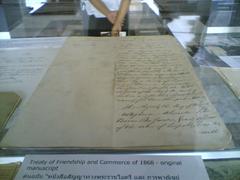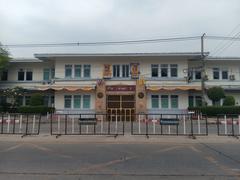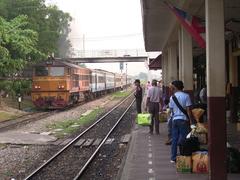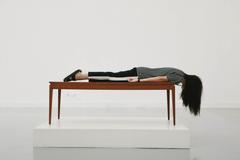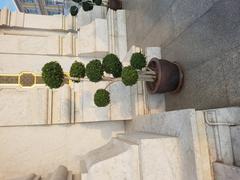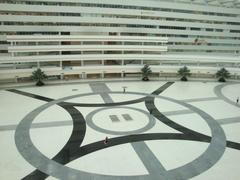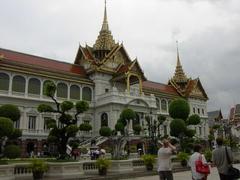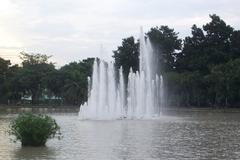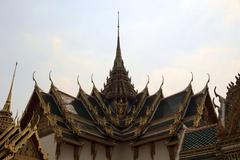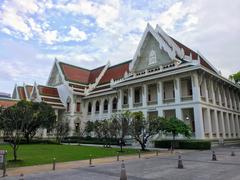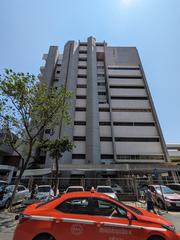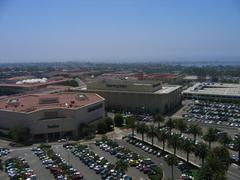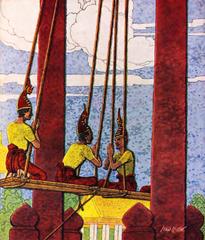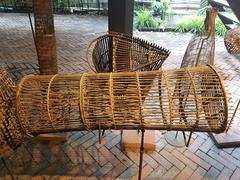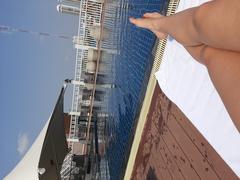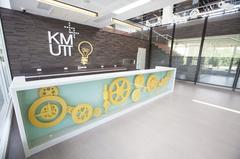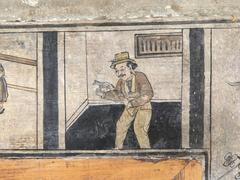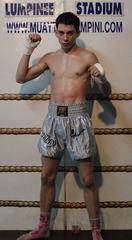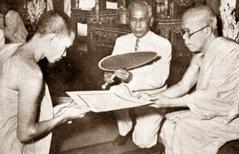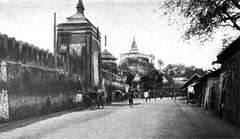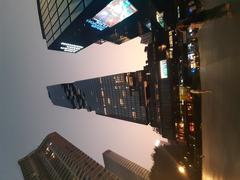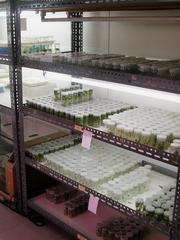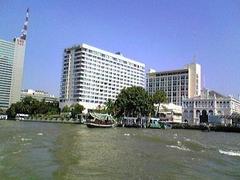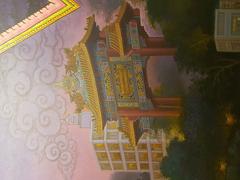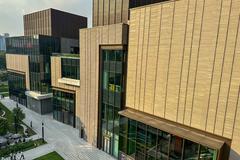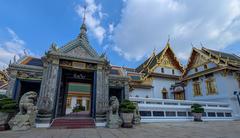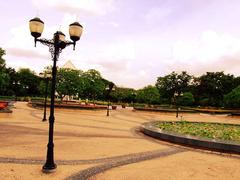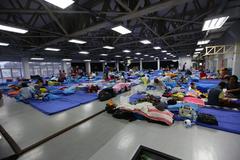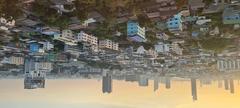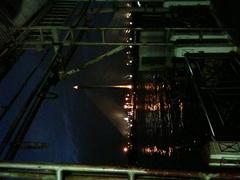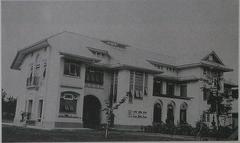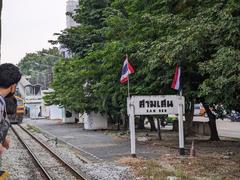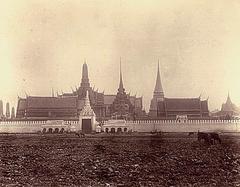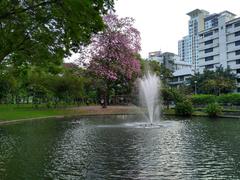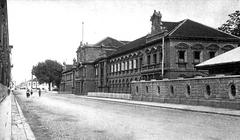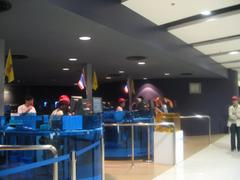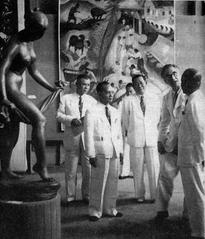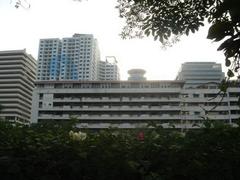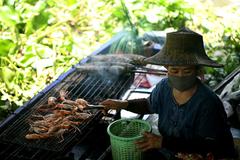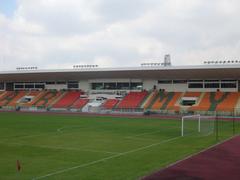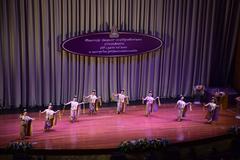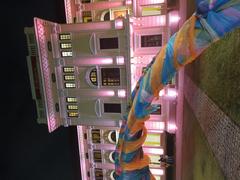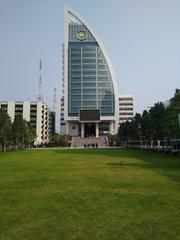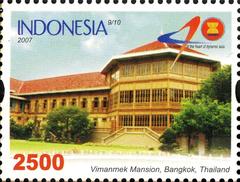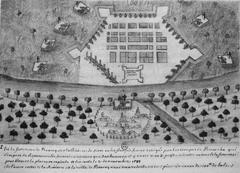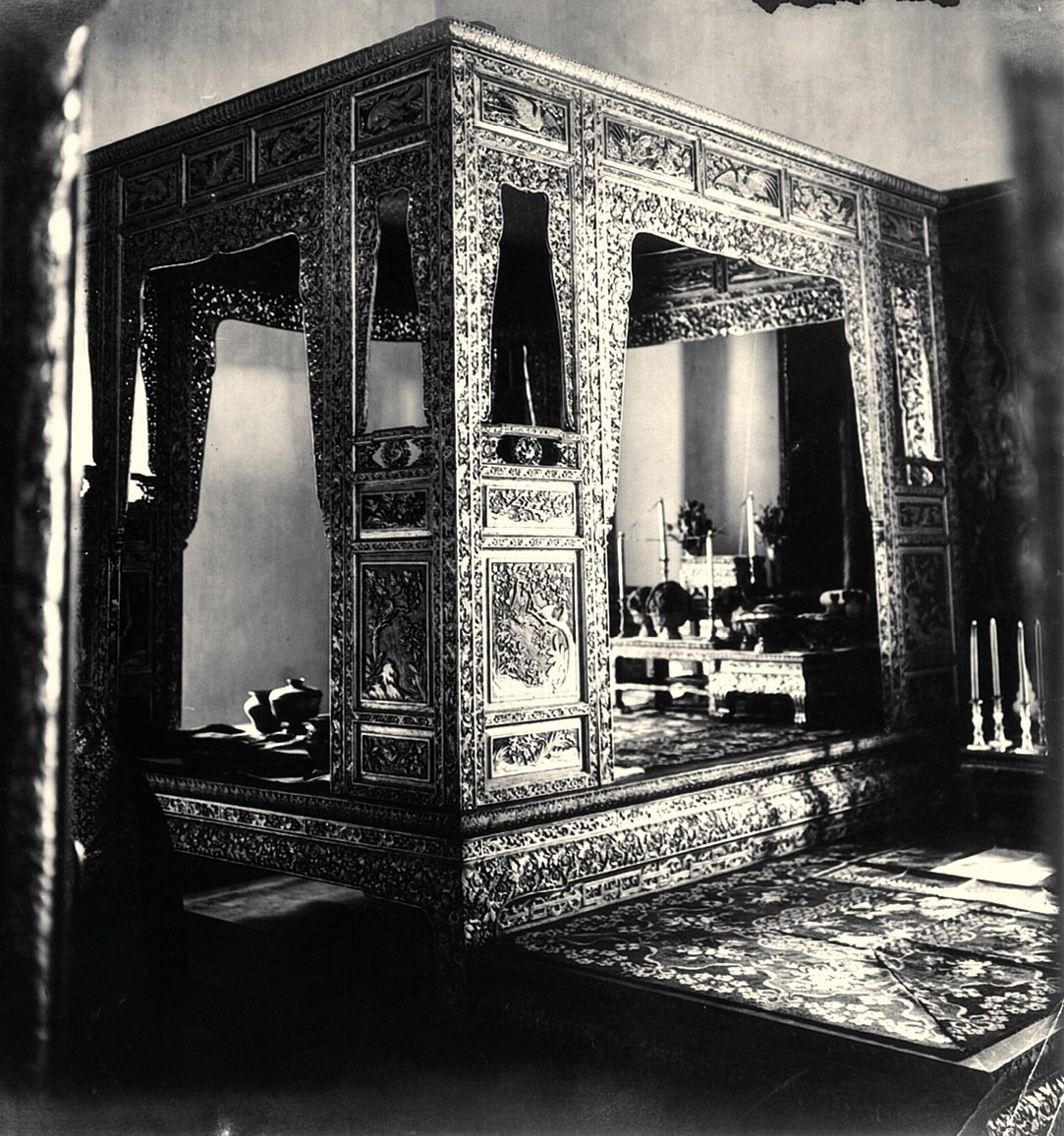
Phra Thinang Amarin Winichai: Visiting Hours, Tickets, and Bangkok Historical Sites Guide
Date: 14/06/2025
Introduction
Phra Thinang Amarin Winichai is a magnificent throne hall within Bangkok’s renowned Grand Palace complex. Built during the reign of King Rama I in the late 18th century, it stands as a testament to the Chakri Dynasty’s enduring legacy, blending traditional Thai architecture with select Western influences. As a site of royal audiences, state ceremonies, and diplomatic receptions, the hall encapsulates the spiritual, political, and artistic heart of Thai monarchy. Its ornate design—from gilded roofs to cosmic murals—offers visitors a profound glimpse into Thailand’s rich cultural and historical tapestry.
This comprehensive guide covers everything you need to know when planning a visit to Phra Thinang Amarin Winichai: its historical significance, architectural highlights, visiting hours, ticketing information, dress code, travel tips, and nearby attractions.
Table of Contents
- Introduction
- Historical Background and Significance
- Architectural Features and Symbolism
- Visiting Phra Thinang Amarin Winichai
- Nearby Attractions and Guided Tours
- Special Events and Photography Guidelines
- Security and Scam Awareness
- Frequently Asked Questions (FAQ)
- Summary Table: Key Facts
- Conclusion
- References
Historical Background and Significance
Origins and Construction
Phra Thinang Amarin Winichai, part of the Maha Monthien group in the Grand Palace, was constructed under King Rama I as part of establishing Bangkok as the new royal capital in 1782. It was conceived as both a royal residence and an administrative center (Wikipedia: Grand Palace). Over subsequent reigns, the hall was expanded and embellished, particularly during the reigns of Rama II, Rama III, and Rama VI, reflecting evolving ceremonial and administrative needs (Wikipedia: Grand Palace).
Ceremonial and Political Role
The hall has long served as the primary audience chamber for the Thai monarch, hosting state functions, diplomatic receptions, and royal ceremonies. Notably, King Rama II received British envoy John Crawfurd here in 1821, exemplifying its continued importance in Thai diplomacy and governance (Liquisearch: Phra Thinang Amarin Winichai).
Even after the royal family moved out of the Grand Palace in 1925, Phra Thinang Amarin Winichai remains a focal point for state ceremonies, coronations, and significant Buddhist rituals, underscoring its unbroken connection to national identity (History Hit: Grand Palace).
Architectural Features and Symbolism
Layout and Exterior
The hall is the northernmost structure in the Maha Monthien group, raised on a 50-centimeter base and featuring a multi-tiered roof with green and orange tiles. Chofah (bird-head finials) and gilded decorations adorn the roof, symbolizing celestial guardianship (baanaksorn.com, thailandlog.com). The eastern orientation reflects traditional auspicious design.
Elaborate gables and mirrored glass mosaics on the exterior create a dazzling interplay of sunlight, while grand staircases guarded by mythical creatures mark the entrance.
Interior Design
Inside, visitors can admire:
- Busabok Throne: The canopied seat for the king, richly decorated with gold, mother-of-pearl, lotus, and Garuda motifs symbolizing purity and authority.
- Mural Panels: Walls depict the Ramakien (Thai Ramayana), Buddhist cosmology, and historic royal events, reinforcing the king’s role as a moral and spiritual leader.
- Ceilings: Painted deep red or blue with gold stars and floral motifs, representing the heavens.
- Chandeliers: Imported during the 19th century, these reflect Western influence and Thailand’s openness to global aesthetics (thailandlog.com).
Symbolic Elements
- Royal Nine-Tiered Umbrella: Positioned above the throne, representing the king’s universal sovereignty (Liquisearch: Royal Nine-Tiered Umbrella).
- Mount Meru Motif: The rear throne symbolizes the cosmic center in Buddhist and Hindu cosmology.
- Integration of Thai and Western Influences: Arched windows, symmetrical facades, and European lighting fixtures complement traditional Thai artistry.
Visiting Phra Thinang Amarin Winichai
Visiting Hours
The Grand Palace complex, including Phra Thinang Amarin Winichai, is open daily from 8:30 AM to 3:30 PM. It is advisable to check for scheduled royal ceremonies or special events that may affect access on the official Grand Palace website (BKKTours).
Tickets and Entry
- Admission Fee: 500 THB for foreign visitors; children under 120 cm enter free (PrepareTravelPlans).
- Where to Buy: Tickets are available at the entrance or online via the official website.
- Audio Guides: Available in multiple languages for 200 THB.
- Guided Tours: Free English tours are offered daily at set times; private guides can be hired for a fee (TouristBangkok).
Dress Code and Visitor Etiquette
Due to the hall’s royal and religious significance, strict attire rules apply:
- Men: Long trousers, sleeved shirts, closed shoes.
- Women: Long skirts or trousers, sleeved (not sheer) tops, closed shoes.
- General: No shorts, sleeveless tops, see-through clothing, or open sandals. Rental clothes are available at the palace for a deposit (PrepareTravelPlans).
Inside the hall and complex:
- Speak quietly
- Do not touch or lean on structures
- Remove hats and sunglasses indoors
- Do not point feet at sacred objects or images of the King
Accessibility and Facilities
- Wheelchair Access: Many areas are accessible, but some historic spaces have steps or uneven surfaces.
- Facilities: Restrooms, souvenir shops, refreshment stands, and water are available throughout the complex.
- Maps: Free maps are provided; digital maps can be downloaded in advance.
Travel Tips
- Best Time to Visit: Early morning (8:30 AM) for fewer crowds and cooler weather. November to February is the most comfortable season (MapsOfWorld).
- Getting There: BTS to Saphan Taksin, then Chao Phraya Express Boat to Tha Chang Pier. MRT to Sanam Chai Station is also convenient (TouristBangkok).
- Nearby Public Transport: Multiple city bus routes serve the area.
Nearby Attractions and Guided Tours
After exploring Phra Thinang Amarin Winichai, consider visiting:
- Wat Phra Kaew (Temple of the Emerald Buddha)
- Wat Pho (Temple of the Reclining Buddha)
- Bangkok National Museum
- Tha Tien Market
Guided tours, including audio and private options, help deepen your understanding of the Grand Palace’s history and ceremonial traditions (baanaksorn.com).
Special Events and Photography Guidelines
Phra Thinang Amarin Winichai is occasionally closed for royal or state ceremonies; such events offer unique cultural insights but may limit public access. Always check the latest updates before visiting.
- Photography: Permitted in outdoor and most public areas. Prohibited inside the throne hall, especially during ceremonies. No flash or tripods indoors.
- Recommended Photo Spots: The hall’s exterior, roof details, and ceremonial courtyards.
Security and Scam Awareness
Beware of common scams around the Grand Palace, such as touts claiming the complex is closed and offering alternative tours. Always verify information with official palace staff or the official website (PrepareTravelPlans).
Frequently Asked Questions (FAQ)
Q: What are the opening hours?
A: 8:30 AM to 3:30 PM daily; check for closures during special ceremonies.
Q: How much is the ticket?
A: 500 THB for foreigners; free for children under 120 cm.
Q: Are audio guides and tours available?
A: Yes—audio guides are 200 THB; free English tours are scheduled daily.
Q: Is photography allowed?
A: Only in outdoor and public areas. No photography inside the throne hall during ceremonies.
Q: What is the dress code?
A: Modest clothing covering shoulders and knees, with closed shoes.
Q: Is the site wheelchair accessible?
A: Many areas are accessible, though some historic sections have steps; assistance is available.
Summary Table: Key Facts
| Aspect | Details |
|---|---|
| Construction Period | Late 18th century (King Rama I, c. 1782–1809) |
| Architectural Style | Traditional Thai with Western influences, symbolic motifs (Indra mural, Royal Nine-Tiered Umbrella) |
| Main Functions | Royal audience chamber, state ceremonies, diplomatic receptions |
| Notable Events | Reception of John Crawfurd (1821), coronations, royal audiences |
| Modifications | Expanded and renovated by Rama II, Rama III, Rama VI |
| Current Use | Ceremonial functions, open to public as part of Grand Palace tour |
| Visiting Hours | 8:30 AM – 3:30 PM daily |
| Ticket Price | 500 THB (foreign tourists), free for children under 120 cm |
Conclusion
Phra Thinang Amarin Winichai is not only an architectural marvel but also a living symbol of Thailand’s monarchy, history, and spiritual traditions. Careful planning—checking opening hours, adhering to dress codes, and considering guided tours—ensures a respectful and rewarding visit. Situated within the Grand Palace, the hall is central to Bangkok’s cultural landscape, offering insight into centuries of royal ceremony and national identity.
For further guidance, audio tours, and real-time updates, download the Audiala app and consult official resources. Exploring Phra Thinang Amarin Winichai promises an immersive journey into the grandeur and enduring spirit of Thailand’s royal heritage.
References
- Wikipedia: Grand Palace
- Liquisearch: Phra Thinang Amarin Winichai
- History Hit: Grand Palace
- baanaksorn.com: The Grand Palace
- thailandlog.com: The Grand Palace in Thailand
- icestm.com: Grand Palace Documentation
- Britannica: Thailand Government and Society
- PrepareTravelPlans: Grand Palace Bangkok Guide
- TouristBangkok: Grand Palace and Wat Phra Kaew
- BKKTours: Grand Palace Opening Days 2025
- official Grand Palace website
- MapsOfWorld: The Grand Palace
